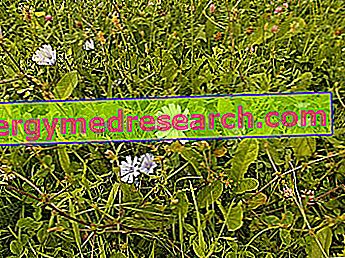
Scientific name
Areca catechu L.Family
ArecaceaeOrigin
Asian East
Synonyms
Betel
Used Parts
Drug consisting of the fruit (areca nut or betel nut).Chemical constituents
- Piperidine alkaloids (arecoline, arecaidine, guvacolin and gervacina).
Bethel in Herbalist: Property of Betel or Areca
The areca is a toxic plant, which in the past was used as a vermifuge in veterinary medicine; its use may, however, cause adverse effects in the parasympathomimetic type on the cardiovascular level, depending on the presence of the alkaloids mentioned above. The areca cannot be used either for medicinal purposes or for cosmetic purposes.
Biological activity
The alkaloids contained in the areca - in particular, arecoline - exert a parasympathomimetic action interacting both with muscarinic receptors and with the nicotinic receptors of the parasympathetic system. This interaction leads to the onset of effects such as hypotension, bradycardia, increased muscle tone, increased salivary, gastric, pancreatic, lacrimal and bronchial secretions, miosis, bronchospasm and tremors.
Furthermore, arecoline also hinders the activity of GABA (gamma-aminobutyric acid) by binding in a competitive way to its receptors, thus exerting a stimulating effect on the central nervous system.
Some studies conducted on animals have shown how areca extracts are able to exert an antidepressant action through a mechanism of action that involves the inhibition of monoamine oxidases (MAO).
However, the areca - due to the activity exerted by its alkaloids - is considered a toxic plant; for this reason, its use has not obtained official approval for any type of therapeutic indication.
Areca in folk medicine and homeopathy
As mentioned, in the past the areca was used as a vermifuge in the veterinary field.
Furthermore, due to the stimulating effects it is able to exert, areca nut is used by various populations as a drug of abuse.
In traditional Chinese medicine, however, areca is used as a remedy for treating digestive problems, diarrhea, oliguria, edema and chronic hepatitis.
In Indian folk medicine, areca seed juice is used as a laxative; while the decoction of the root of the plant is used as a remedy against chapped lips.
The areca is also used in the homeopathic environment, where it can be found in the form of granules or drops.
Homeopathic medicine uses this plant in case of helminthiasis, glaucomas, myopia and increased salivation.
The dose of homeopathic remedy to be taken can be different between one patient and another, also depending on the type of disorder that must be treated and according to the type of preparation and homeopathic dilution that one intends to use.
Side effects
As mentioned, the use of areca is highly discouraged due to the toxic action exerted by the alkaloids it contains.
Areca intake is associated with the development of cardiovascular diseases and neoplastic diseases. Moreover, in case of overdose, death can also occur.
Contraindications
Ascertained hypersensitivity to one or more components.
Pharmacological Interactions
- procyclidine: rigidity, bradykinesia and tremor;
- Fluphenazine: tremors and akinesia;
- bronchodilators: reduction of the drug's effectiveness.
Note
The term "betel" means a mixture of areca nuts, leaves of Piper betle (herbaceous plant of the Piperaceee family) and lime, known in the East as a vermicide.
The leaves of Piper betle are used alone for psychostimulant purposes by the populations of India and south-east Asia, similar to those of the Kath (Catha edulis) (there are considerable side effects at the level of the CNS and the apparatus cardiovascular).



